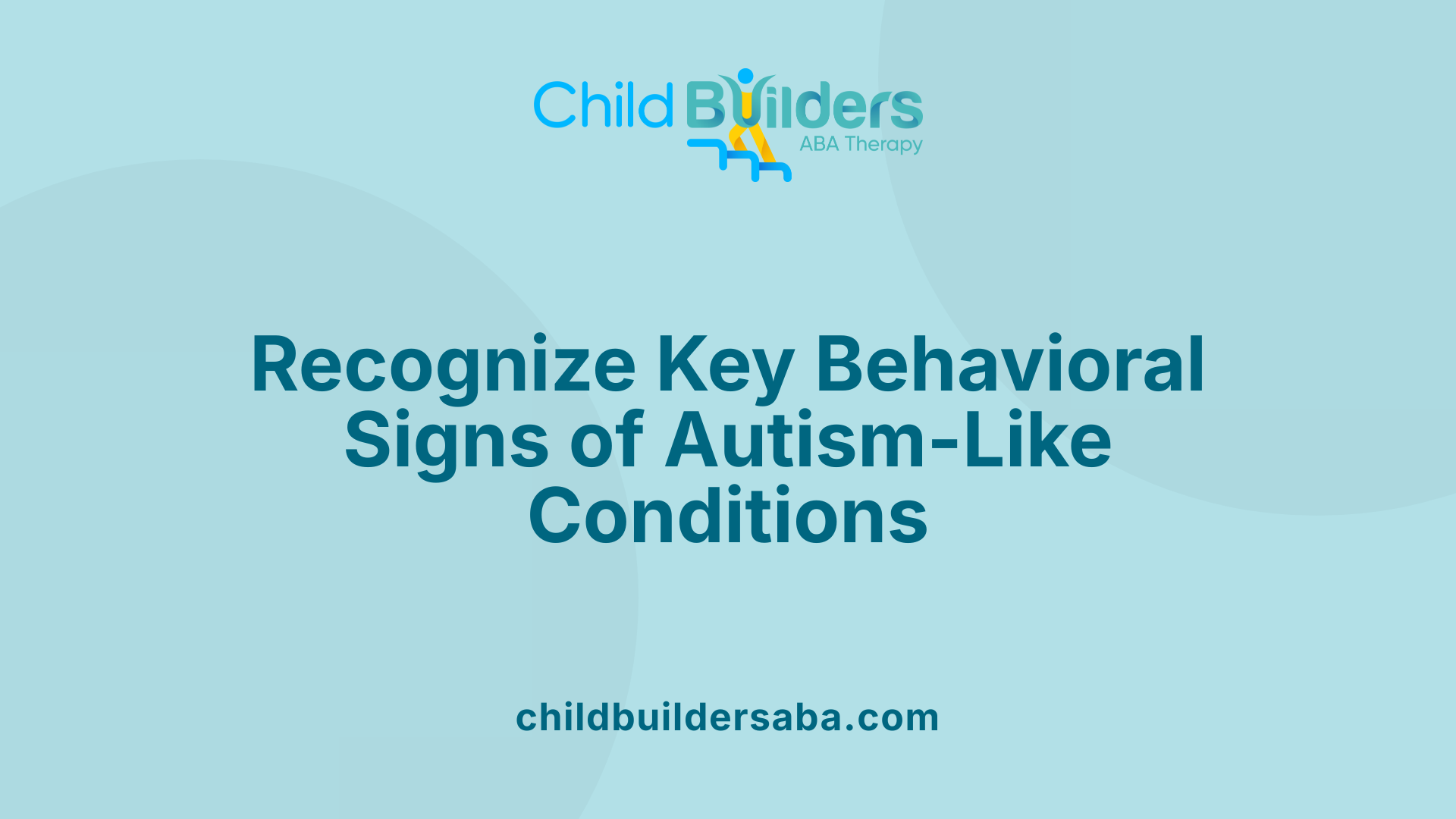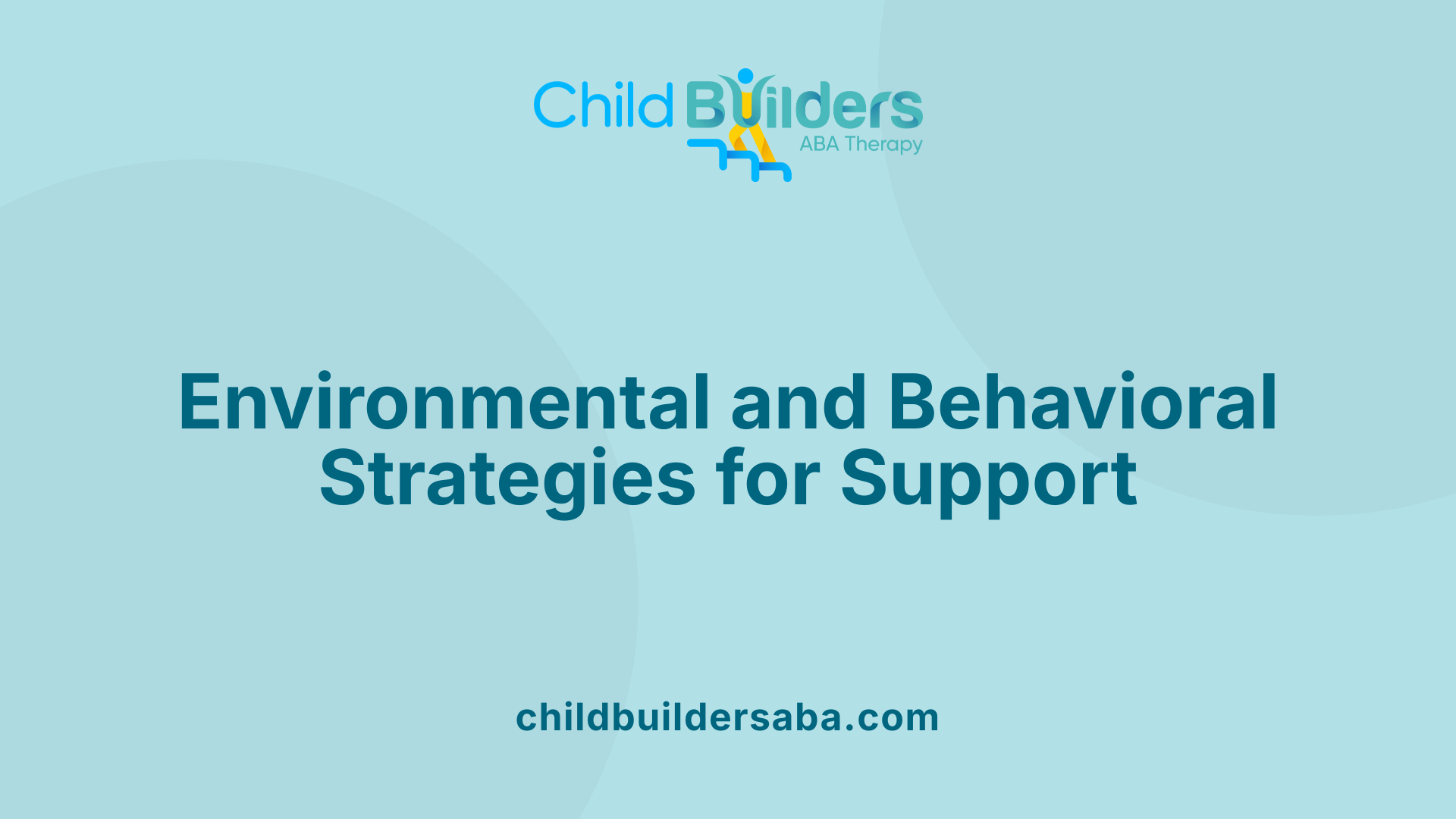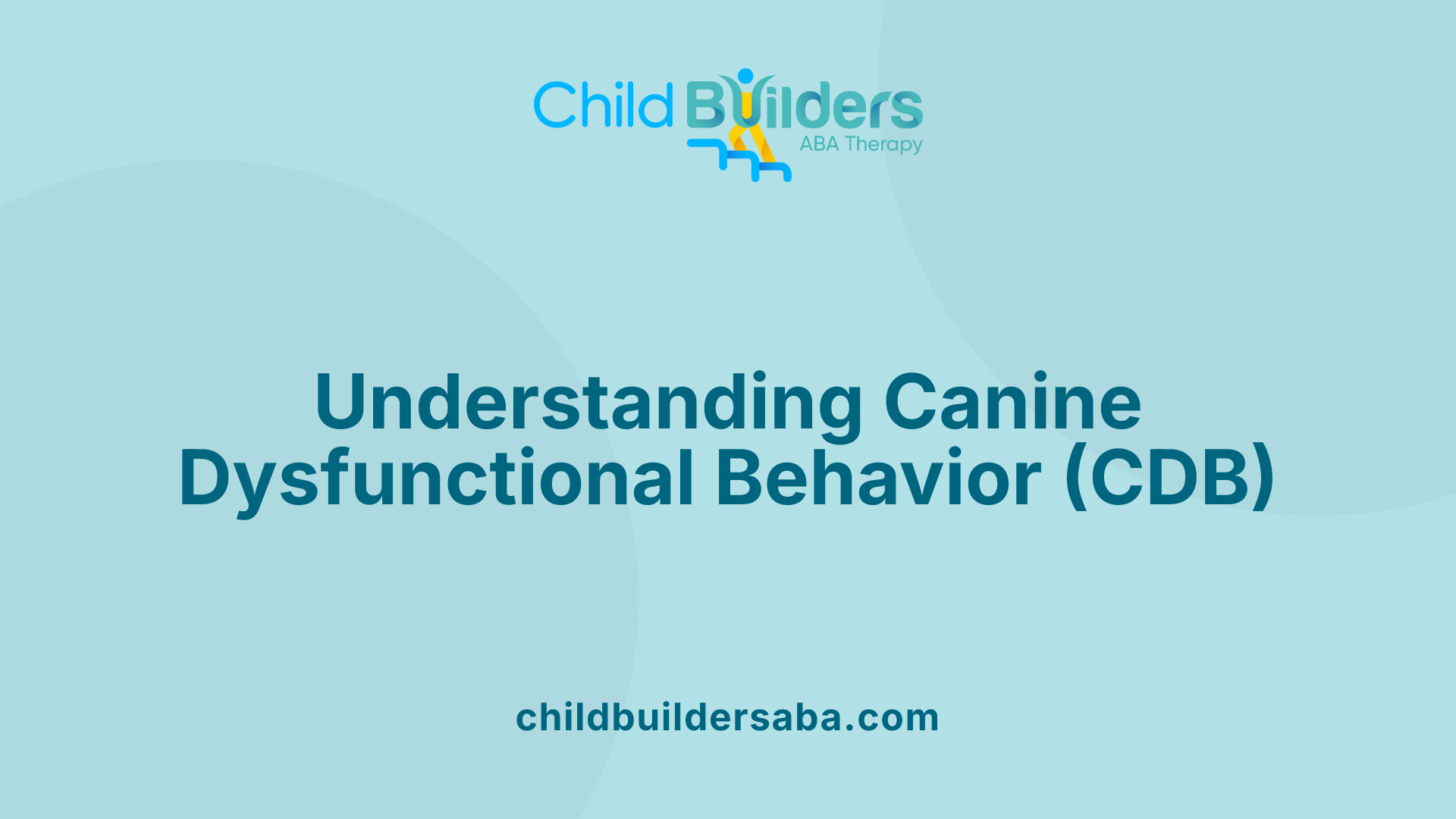Can Dogs Have Autism?

Exploring the Complex World of Dog Behavior and Neurodivergence
While dogs cannot technically have autism as humans do, they can exhibit behaviors that resemble core traits of autistic spectrum disorder. Understanding these behaviors, their possible causes, and effective management strategies is essential for pet owners, veterinarians, and behaviorists aiming to enhance canine welfare and social functioning.
Signs and Behaviors Indicating Autism-Like Traits in Dogs
 Dogs can sometimes display behaviors that resemble traits seen in autism spectrum disorder (ASD) in humans. Recognizing these signs early is important for providing appropriate support and enrichment.
Dogs can sometimes display behaviors that resemble traits seen in autism spectrum disorder (ASD) in humans. Recognizing these signs early is important for providing appropriate support and enrichment.
One common sign is the presence of repetitive actions. Dogs that repeatedly spin in circles or chase their tails are exhibiting behaviors often associated with autism-like conditions. These actions might serve as self-stimulation or coping mechanisms.
Another notable behavior is difficulty in engaging socially. Some dogs may show reluctance or difficulty in interacting with other animals or humans. They might prefer to be alone or avoid eye contact, which can be a sign of social withdrawal.
Sensory sensitivities are also characteristic. Dogs with autism-like traits may react intensely to certain sounds, textures, or visual stimuli. For example, they might be startled or distressed by loud noises or certain touch sensations, indicating heightened sensory awareness or sensitivities.
Avoidance of eye contact is a significant indicator. A dog that consistently turns away or averts gaze during interaction might be experiencing social withdrawal, similar to observations in individuals with autism.
Additionally, overreaction to environmental stimuli is common. Noises such as fireworks or thunder can cause some dogs to become overly agitated or panicked, demonstrating an exaggerated response to stimuli that others might tolerate.
| Behavior or Trait | Description | Possible Significance |
|---|---|---|
| Repetitive behaviors | Spinning, tail chasing | Self-stimulatory or coping behavior |
| Social engagement challenges | Avoidance of eye contact, withdrawing from interaction | Social interaction difficulty |
| Sensory sensitivities | Reacting strongly to sounds or textures | Heightened sensory processing |
| Environmental overreactions | Fear or panic in response to loud noises | Overreactivity to stimuli |
Understanding these signs helps in differentiating autism-like behaviors from other issues. Early recognition allows pet owners to implement targeted training, enrichment, and modifications to improve the well-being and social functioning of affected dogs.
Recognizing and Supporting Dogs with Autism-Like Traits
 Observing specific behaviors is essential when recognizing autism-like traits in dogs. Repetitive movements, such as spinning, tail-chasing, or pacing, are common signs. Social withdrawal, including avoiding interaction or showing little interest in play or companionship, may also indicate challenges in social engagement. Additionally, dogs with these traits often exhibit hyper-sensitivity to stimuli like loud noises, bright lights, or sudden environmental changes, reacting more intensely than typical dogs.
Observing specific behaviors is essential when recognizing autism-like traits in dogs. Repetitive movements, such as spinning, tail-chasing, or pacing, are common signs. Social withdrawal, including avoiding interaction or showing little interest in play or companionship, may also indicate challenges in social engagement. Additionally, dogs with these traits often exhibit hyper-sensitivity to stimuli like loud noises, bright lights, or sudden environmental changes, reacting more intensely than typical dogs.
Attention to these signs can help in early identification, but it is crucial to consult a veterinarian for an accurate diagnosis. A vet can rule out other health issues and suggest appropriate interventions. Once identified, supporting these dogs involves creating an environment that minimizes stress. Modifications might include providing a calm, predictable space free from loud noises and chaotic stimuli.
Behavioral interventions are also beneficial. Positive reinforcement training encourages desirable behaviors and helps build trust and social skills. For some dogs, behavioral therapy with a canine behaviorist can develop tailored strategies to improve coping mechanisms. Remember, although there is no cure for these traits, patience and consistent support significantly enhance the dog’s quality of life.
| Behavior Signs | Description | Supplemental Actions |
|---|---|---|
| Repetitive movements | Spinning, tail-chasing, pacing | Observe to understand triggers, reduce stress factors |
| Social withdrawal | Avoidance of interaction | Use gentle encouragement, positive reinforcement |
| Sensitivity to stimuli | Overreaction to noise, lights | Provide a quiet, controlled environment |
| Response to changes | Anxiety or distress | Introduce changes gradually, offer comfort |
Helping dogs with autism-like behaviors requires understanding their unique needs and implementing supportive strategies. Consulting professionals and maintaining patience are vital components to ensure these dogs can lead better, more comfortable lives.
Are Dogs Capable of Having Autism?
Can dogs have autism or similar neurodivergent behaviors?
Dogs cannot have autism, as this condition is exclusive to humans. Autism spectrum disorder (ASD) involves complex neurological processes that cannot be diagnosed in animals. However, some dogs exhibit behaviors that are similar to core traits of autism. These behaviors are often referred to as canine dysfunctional behavior (CDB).
CDB can include repetitive actions like pacing or lip licking, social withdrawal or avoidance, communication difficulties such as limited barking or response to social cues, and heightened sensory sensitivities to sounds, lights, or touch. While these traits resemble autism, they do not mean the dog has the condition.
Several factors influence the development of these behaviors. Genetics and breed predispositions play a role; some breeds may be more prone to certain behavioral tendencies. Early life experiences, including trauma or lack of socialization, can also contribute to atypical behaviors.
Currently, there are no formal diagnostic criteria for canine autism. Veterinarians and animal behaviorists rely on behavioral assessments and careful observation to understand these behaviors. Evaluation often involves tracking the dog’s responses to various stimuli and social situations.
Management of these behaviors typically includes environmental enrichment—providing stimulating toys, routine, and positive social interactions—and training techniques that reinforce desirable behaviors. The goal is to help dogs live balanced, comfortable lives, regardless of whether they display traits similar to autism.
In summary, while dogs cannot have autism, they can exhibit behaviors that mimic some autistic traits. These behaviors are influenced by a combination of genetic and environmental factors, but professional diagnosis and intervention focus on improving the dog's quality of life rather than labeling their condition as autism.
What is Canine Dysfunctional Behavior (CDB)?

How is Canine Dysfunctional Behavior (CDB) defined?
Canine Dysfunctional Behavior (CDB) is a term that describes an array of behavioral issues in dogs which are conceptually similar to autism spectrum disorder in humans. These behaviors can profoundly influence how dogs act and interact within their environment.
What behaviors are included in CDB?
Dogs exhibiting CDB may engage in repetitive actions such as pacing, spinning, or tail chasing. They might also display social withdrawal, showing little interest in human interaction or avoiding other animals. Sometimes, their responses to sensory stimuli like loud noises or unfamiliar environments are unusual or exaggerated, making daily life challenging for the dog.
What are the possible causes of CDB?
The origins of CDB are complex and not yet fully understood. It is believed that neurological factors, such as brain wiring issues, psychological elements like anxiety, or environmental influences like early life stress, may contribute to this behavior. Identifying the exact cause often remains difficult, which complicates treatment and management.
How does CDB affect dogs’ quality of life?
Dogs with CDB may experience significant difficulties in their daily lives. Their behaviors can hinder normal social interactions, limit participation in family activities, and cause frustration for their owners. Over time, untreated CDB can lead to increased stress and deteriorate the dog’s overall well-being.
How is CDB managed?
Managing CDB involves a combination of approaches. Behavioral modification strategies, such as training programs aimed at reducing specific behaviors and encouraging positive interactions, are commonly used. Additionally, environmental enrichment—providing stimulating toys, safe spaces, and structured routines—can help reduce symptoms. In some cases, veterinarians may recommend medications to address underlying neurological or psychological issues, always under professional supervision.
| Aspect | Description | Additional Details |
|---|---|---|
| Behavioral Approaches | Training and modification | Techniques tailored to individual behaviors |
| Environmental Strategies | Enrichment and routine | Creating a calming, stimulating setting |
| Medical Interventions | Pharmacological support | Supervised by vets for behavior and neurological issues |
The Role of Genetics and Early Experiences in Behavioral Traits
How do breed predispositions influence dog behavior?
Many dog breeds have natural tendencies that influence their behavior. For example, Border Collies are often highly trainable and energetic, making them excellent herders or agility competitors. Conversely, Mastiffs may display protective instincts, highlighting their role as guard dogs. These tendencies stem from generations of selective breeding aimed at emphasizing certain traits.
| Breed | Typical Behavior Traits | Underlying Purpose |
|---|---|---|
| Border Collie | High intelligence, agility, obedience | Herding and herding control |
| Mastiff | Protective, calm, imposing | Guarding and protection |
| Labrador Retriever | Friendly, eager to please, social | Retrieval and companionship |
While genetics provide the blueprint, the expression of these behaviors can vary based on individual experiences.
How does early socialization and environment impact development?
Early social experiences are crucial in shaping a dog’s behavior. Puppies exposed to diverse people, other animals, and various environments often grow up to be well-adjusted and less fearful. Positive early encounters can reduce future issues like aggression or excessive shyness.
Environmental factors such as consistent routines, training, and safe exposure to new stimuli help shape confident and adaptable dogs. Lack of socialization during critical developmental periods, typically between 3 and 14 weeks, can lead to behavioral problems that persist into adulthood.
In what ways do neurology and experience shape behavior?
Neurobiological factors work alongside experience to influence behavior. Variations in brain chemistry, structure, and neural pathways can affect temperament, stress responses, and learning ability. For example, some dogs may naturally have higher levels of activity or aggression due to genetic neurologic factors.
Experience interacts with these biological factors, reinforcing or modifying innate tendencies. A dog genetically predisposed to nervousness may become more anxious if not properly socialized or if subjected to stressful environments. Conversely, positive reinforcement and training can help rewire certain responses, promoting desirable traits.
Understanding the interplay between a dog’s genetic makeup and its early life experiences can help owners and trainers foster healthier and more balanced behavior. Recognizing these influences supports better training approaches and more fulfilling companionship.
Diagnostic Challenges and the Lack of Formal Criteria
Absence of established diagnostic standards for canine autism
Unlike human autism spectrum disorder, there are no universally accepted diagnostic criteria for identifying autism in dogs. Veterinary and animal behavior experts have yet to develop formal guidelines or standardized tests that reliably diagnose this condition.
This lack of standardization means that behaviors often associated with autism in humans, such as social withdrawal or repetitive actions, cannot be definitively linked to a specific diagnosis in dogs. As a result, diagnosing canine autism remains a complex process that depends heavily on observations and interpretation by experienced professionals.
Behavioral assessments and expert observations used as alternatives
In the absence of formal criteria, veterinarians and animal behaviorists primarily rely on behavioral assessments and their expert observations. They look for consistent patterns of behavior that may suggest autism-like traits, such as abnormal social interactions, excessive repetitive movements, or difficulties in learning new commands.
These assessments often involve detailed observation of the dog in various settings, along with reports from owners about the dog's daily behavior. Although helpful, these methods are subjective and can vary from one expert to another, highlighting the need for more standardized measures.
Emphasis on individualized understanding and management of behaviors
Given the current diagnostic limitations, a personalized approach is crucial. Veterinarians often focus on understanding each dog's unique behavioral profile and managing these behaviors effectively. This might include tailored training programs, environmental modifications, and behavioral therapies designed to improve quality of life.
While research continues, current practices emphasize compassion, patience, and customized strategies, aiming to support dogs exhibiting behaviors that resemble autism traits, even without a formal diagnostic label.
Effective Interventions and Support Strategies
Environmental enrichment tailored to individual needs
Providing a stimulating and adaptable environment is crucial for dogs with neurodivergent behaviors. Tailoring enrichment activities—such as puzzle toys, scent games, and sensory stimulation—to each dog's specific preferences and sensitivities helps promote mental engagement and reduce anxiety. Customizing these interventions ensures that the dog remains interested and comforts become integrated into daily routines.
Patience and consistency in training and management
Implementing training and management strategies requires patience and steady commitment. Consistent routines help foster a sense of security, and positive reinforcement techniques encourage desirable behaviors. Recognizing that progress may be gradual allows handlers to maintain a calm and supportive approach, essential for building trust and helping the dog adapt gradually.
Potential use of pharmacological approaches under veterinary supervision
In some cases, medication may be part of a comprehensive support plan. When used judiciously and under veterinary guidance, pharmacological approaches can help manage anxiety, hyperactivity, or other challenging behaviors, creating a more stable foundation for behavioral interventions. It is essential that any medication plan is regularly monitored and adjusted according to the dog's response.
Collaboration with canine behaviorists and trainers
Partnering with experienced canine behaviorists and trainers provides specialized insights and tailored strategies. These professionals assess the dog's specific needs and develop effective plans for behavioral modification. Ongoing collaboration ensures that interventions remain current and effective, making it easier to support the dog's development and well-being.
Advancing Our Understanding of Canine Neurodiversity
Although dogs cannot have autism in the human sense, recognizing behaviors that resemble autism is crucial for improving their welfare. Continued research, education, and tailored interventions can help pet owners and professionals better support dogs with autism-like traits, enhancing their quality of life and social integration.






.jpg)






























































































